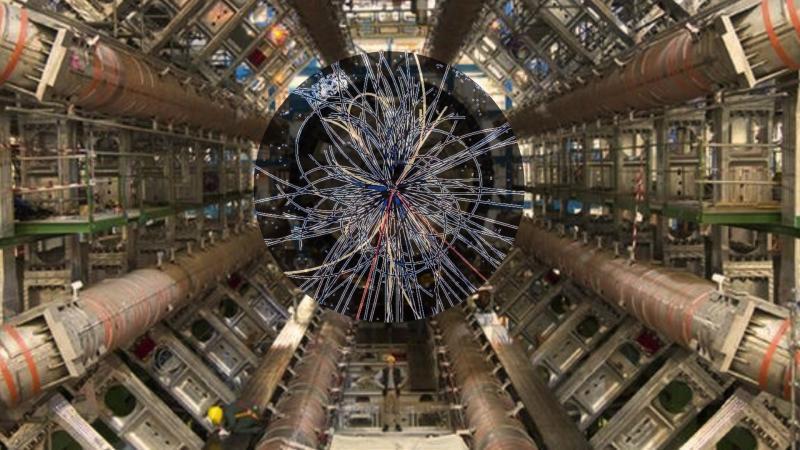
CERN Scientists Shedding Light on Antimatter & Universe’s Origins
The Large Hadron Collider (LHC) at CERN, one of the most complex and powerful scientific instruments in the world, has again made groundbreaking discoveries, this time shedding new light on the mysteries of antimatter. The ALICE collaboration, a team of scientists from around the world, has confirmed the first evidence of antihyperhelium-4, a type of exotic particle that has been produced under extreme conditions. This significant finding offers unique insights into the fundamental forces of nature and the balance between matter and antimatter, providing a clearer understanding of the universe’s early moments.
The LHC, a massive particle accelerator that spans over 27 kilometers in circumference, has been the site of numerous groundbreaking discoveries since its inception. One of the most notable achievements was the detection of the Higgs boson, a fundamental particle that explains how particles acquire mass. The LHC’s ability to collide high-energy particles at incredibly high speeds has allowed scientists to recreate the conditions of the early universe, providing a window into the fundamental forces that shape our cosmos.
Antimatter, a type of matter that has opposite charges to its ordinary counterpart, has long fascinated scientists. Its existence was first proposed by physicist Paul Dirac in the 1920s, and since then, numerous experiments have been conducted to study its properties. However, producing and studying antimatter has proven to be a challenging task, as it requires the creation of high-energy particles in a controlled environment.
The ALICE collaboration, a team of scientists from over 30 countries, has been working tirelessly to study the properties of antimatter using the LHC. In their latest experiment, they collided heavy ions at nearly the speed of light, creating an environment that mimics the conditions of the early universe. By analyzing the particles produced in these collisions, the team was able to detect the first evidence of antihyperhelium-4, a type of antimatter that is extremely rare in nature.
Antihyperhelium-4 is a type of exotic particle that is composed of four antiprotons, the antiparticle of the proton. It is an extremely rare form of antimatter, as it requires the production of four antiprotons in a single collision. The ALICE collaboration’s detection of antihyperhelium-4 provides new insights into the fundamental forces of nature and the balance between matter and antimatter.
“We are thrilled to have detected antihyperhelium-4, a particle that is crucial for understanding the fundamental forces of nature,” said Dr. Yves Schutz, a physicist at the ALICE collaboration. “This discovery opens up new avenues for studying the properties of antimatter and its interactions with ordinary matter.”
The detection of antihyperhelium-4 also provides new insights into the early moments of the universe. According to the Standard Model of cosmology, the universe began as a singularity, an infinitely hot and dense point, around 13.8 billion years ago. As it expanded and cooled, particles began to form, including protons, neutrons, and electrons. However, the universe was not entirely matter-dominated; it also contained a small amount of antimatter.
The balance between matter and antimatter is crucial for understanding the universe’s early moments. If the universe had been antimatter-dominated, we would not exist today. The detection of antihyperhelium-4 provides new insights into the balance between matter and antimatter and the mechanisms that drove the formation of the universe.
The ALICE collaboration’s discovery is not only a significant milestone in the study of antimatter but also highlights the importance of continued investment in fundamental research. The LHC, one of the most complex and expensive scientific instruments in the world, has already made numerous groundbreaking discoveries, and its continued operation is crucial for advancing our understanding of the universe.
As the ALICE collaboration continues to study the properties of antimatter, they will be able to provide new insights into the fundamental forces of nature and the balance between matter and antimatter. These discoveries will not only enhance our understanding of the universe’s early moments but also provide new opportunities for technological innovation and advancement.
In conclusion, the ALICE collaboration’s detection of antihyperhelium-4 is a significant milestone in the study of antimatter and the universe’s origins. This discovery provides new insights into the fundamental forces of nature and the balance between matter and antimatter, offering a clearer understanding of the universe’s early moments. As the LHC continues to operate, scientists will be able to make new discoveries that will enhance our understanding of the universe and the laws of physics that govern it.
News Source:
https://researchmatters.in/news/exotic-antimatter-spotted-heavy-ion-collisions-lhc






